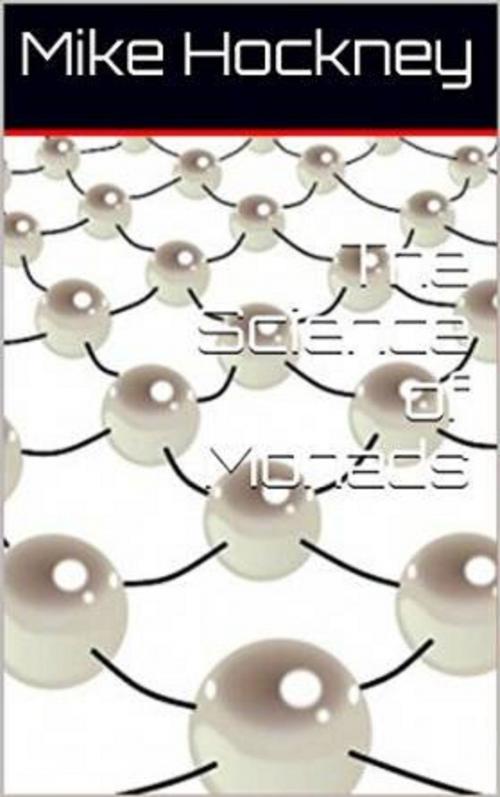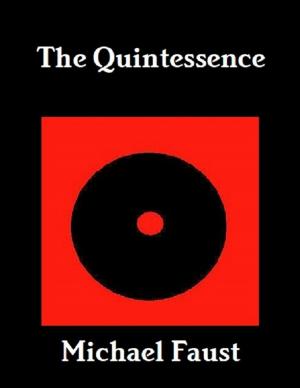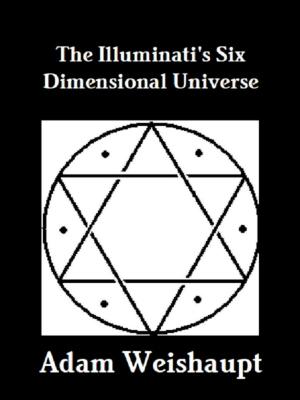| Author: | Mike Hockney | ISBN: | 9781310377105 |
| Publisher: | Mike Hockney | Publication: | May 1, 2016 |
| Imprint: | Smashwords Edition | Language: | English |
| Author: | Mike Hockney |
| ISBN: | 9781310377105 |
| Publisher: | Mike Hockney |
| Publication: | May 1, 2016 |
| Imprint: | Smashwords Edition |
| Language: | English |
If a scientific materialist were asked to sum up his belief system, he might reflect exactly what Richard Feynman, a pope of science, said: “If, in some cataclysm, all of scientific knowledge were to be destroyed, and only one sentence passed on to the next generation of creatures, what statement would contain the most information in the fewest words? I believe it is the atomic hypothesis (or the atomic fact, or whatever you wish to call it) that all things are made of atoms – little particles that move around in perpetual motion, attracting each other when they are a little distance apart, but repelling upon being squeezed into one another. In that one sentence, you will see, there is an enormous amount of information about the world, if just a little imagination and thinking are applied.”
Scientific materialism isn’t the only type of science. Leibniz, the great German genius, was a champion of scientific idealism. The atoms in his system weren’t physical, but mental, and he named them monads. To counter Feynman’s position, a present-day Leibniz might say, “All things are made from mental atoms, which are simple mathematical substances from which all compounds are mathematically derived via the laws of ontological mathematics. Monads are expressed through constant motion, and that mental motion is what we call thinking. Pure thinking takes place in an immaterial, mathematical frequency domain outside space and time. By virtue of Fourier mathematics, frequency functions can be represented in a spacetime domain, and this domain is what is known as the physical world of matter. It is not 'physical' in any true sense. It’s just a certain mode of mental functionality. There is no such thing as scientific matter. There is only mind. A mind is a monad, and monads are all there are. Everything is an expression of monadic, mental mathematics.”
Well, who’s right between Feynman and the modern Leibniz? Both are scientists, but Feynman is a materialist who believes in material atoms in spacetime as the basis of our reality, while the modern Leibniz is an idealist who posits mental, mathematical atoms in an immaterial frequency domain as the ground of existence. Feynman is an empiricist who believes in sensory experiments as the source of reliable evidence, while the modern Leibniz is a rationalist who advocates mathematical reason as the source of provable Truth. These are two wholly opposed worldviews, at war with each other.
Scientific materialists imagine themselves clear thinkers opposed to believers in silly Mythos religions, but those are not their real enemies. Their true opponents are mathematical rationalists who advocate reason and intellect over the senses and experience. The Truths of reality are not sensory, contingent, empirical “truths” of fact. They are non-sensory, eternal, necessary, non-empirical truths of reason. Only one subject can capture the eternal truths of reason: ontological mathematics. Scientific materialism won’t help you one jot.
If a scientific materialist were asked to sum up his belief system, he might reflect exactly what Richard Feynman, a pope of science, said: “If, in some cataclysm, all of scientific knowledge were to be destroyed, and only one sentence passed on to the next generation of creatures, what statement would contain the most information in the fewest words? I believe it is the atomic hypothesis (or the atomic fact, or whatever you wish to call it) that all things are made of atoms – little particles that move around in perpetual motion, attracting each other when they are a little distance apart, but repelling upon being squeezed into one another. In that one sentence, you will see, there is an enormous amount of information about the world, if just a little imagination and thinking are applied.”
Scientific materialism isn’t the only type of science. Leibniz, the great German genius, was a champion of scientific idealism. The atoms in his system weren’t physical, but mental, and he named them monads. To counter Feynman’s position, a present-day Leibniz might say, “All things are made from mental atoms, which are simple mathematical substances from which all compounds are mathematically derived via the laws of ontological mathematics. Monads are expressed through constant motion, and that mental motion is what we call thinking. Pure thinking takes place in an immaterial, mathematical frequency domain outside space and time. By virtue of Fourier mathematics, frequency functions can be represented in a spacetime domain, and this domain is what is known as the physical world of matter. It is not 'physical' in any true sense. It’s just a certain mode of mental functionality. There is no such thing as scientific matter. There is only mind. A mind is a monad, and monads are all there are. Everything is an expression of monadic, mental mathematics.”
Well, who’s right between Feynman and the modern Leibniz? Both are scientists, but Feynman is a materialist who believes in material atoms in spacetime as the basis of our reality, while the modern Leibniz is an idealist who posits mental, mathematical atoms in an immaterial frequency domain as the ground of existence. Feynman is an empiricist who believes in sensory experiments as the source of reliable evidence, while the modern Leibniz is a rationalist who advocates mathematical reason as the source of provable Truth. These are two wholly opposed worldviews, at war with each other.
Scientific materialists imagine themselves clear thinkers opposed to believers in silly Mythos religions, but those are not their real enemies. Their true opponents are mathematical rationalists who advocate reason and intellect over the senses and experience. The Truths of reality are not sensory, contingent, empirical “truths” of fact. They are non-sensory, eternal, necessary, non-empirical truths of reason. Only one subject can capture the eternal truths of reason: ontological mathematics. Scientific materialism won’t help you one jot.















